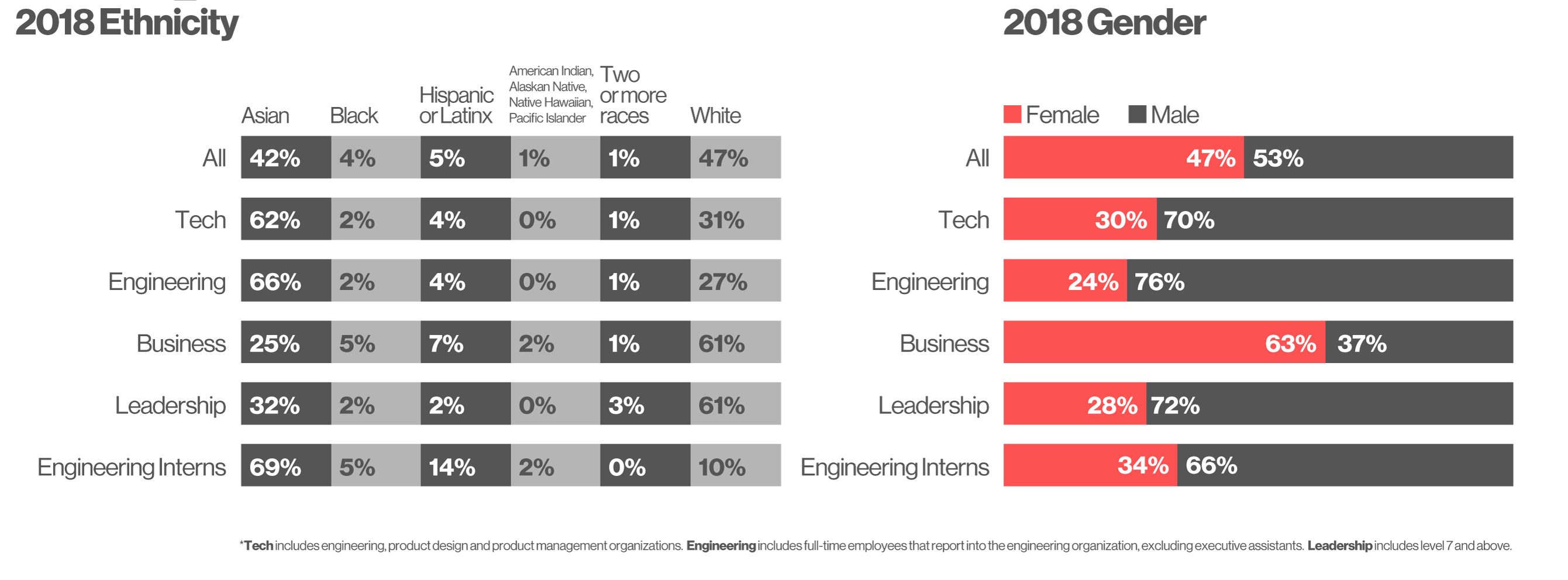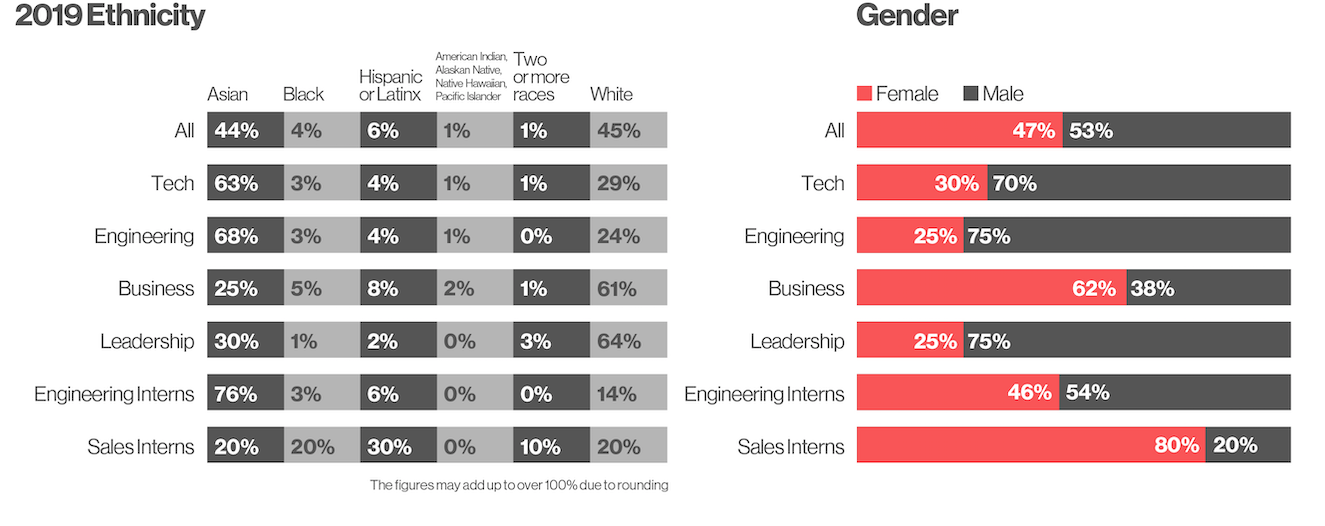Pinterest today released its latest diversity report, showing slight gains in representation of underrepresented minorities while also hitting its three hiring goals.
The company has long been recognized as an industry leader when it comes to promoting diversity and inclusion. It was one of the first tech companies to publicly release diversity data, and, in 2015, became the first to set concrete hiring goals.
In its report today, Pinterest said it beat all of its hiring goals, which focus on female engineers and engineers from underrepresented groups, as well as business and product employees from underrepresented groups. Women now make up 25% of the company’s engineering team and underrepresented folks comprise 10% of the overall company — but while making progress across its three hiring goals, there was little change in overall representation of underrepresented minorities year over year.


“Despite exceeding our hiring goals, the overall representation of underrepresented talent could increase more quickly,” Pinterest Chief Human Resources Officer Jo Dennis wrote on the Pinterest blog.
Of course, for a company with 2,000 employees worldwide, it won’t be easy to dramatically increase overall representation. But given its mild gains, it does seem to be trying.
One important element missing from the diversity report is retention data. In her post, Dennis mentioned retention, but did not offer any data.
When TechCrunch asked if they would make the data available, a Pinterest spokesperson said, “unfortunately, we can’t share the retention metrics publicly, but it will continue to be an internal priority.”
Moving forward, Dennis wrote in her post, Pinterest would not neglect retention.
“We learned that if we want to create a working environment where people can do their best work, we need to invest further in understanding what drives retention,” she wrote. “We’ve expanded accountability metrics for inclusion and diversity to include retention and engagement parity, alongside hiring. These are reviewed with the executive team, as well as each business unit, on a quarterly basis at a minimum.”
Reporting retention data has become relatively standard. Tech giants Google and Intel, for example, both report retention data. Google released its first attrition index — the rate at which employees leave on an annual basis — in 2018, and has done so since then. According to Google’s most recent index, the company reported attrition rates for Black and Latinx people are higher than the national average.
It’s important to examine and report this data, because it addresses whether a company is effective at fostering an inclusive environment. If retention rates are low, that’s the equivalent of a leaky bucket: a significant number of people are coming in with just as many — if not more — leaving.
As for Pinterest, we won’t have a way of knowing how it’s going until it releases retention data.
